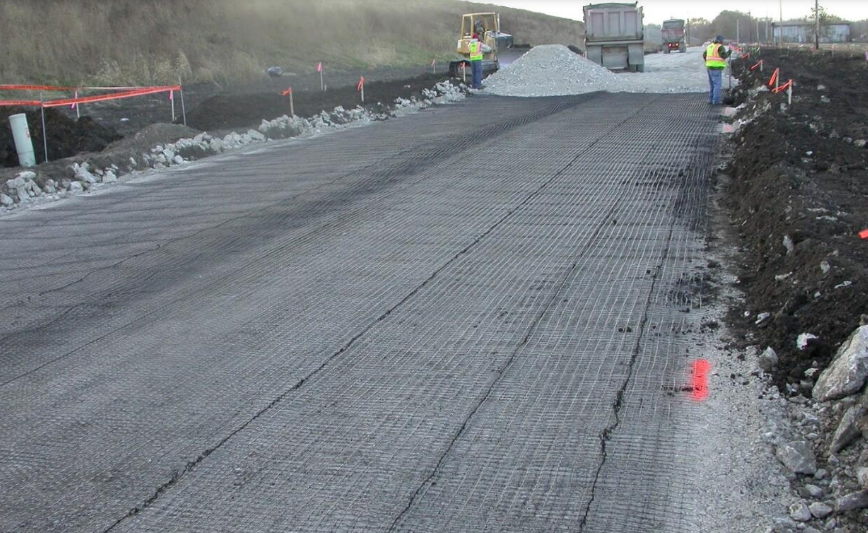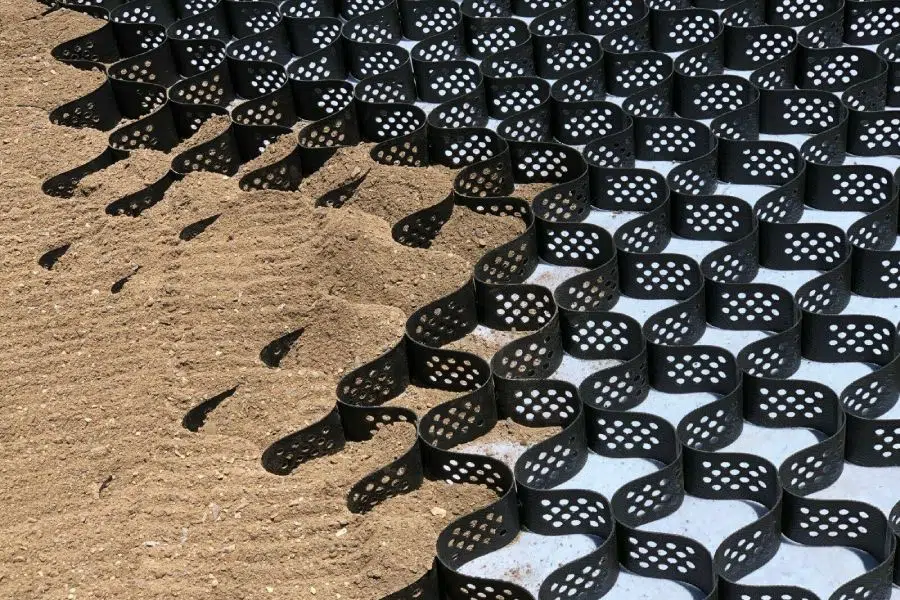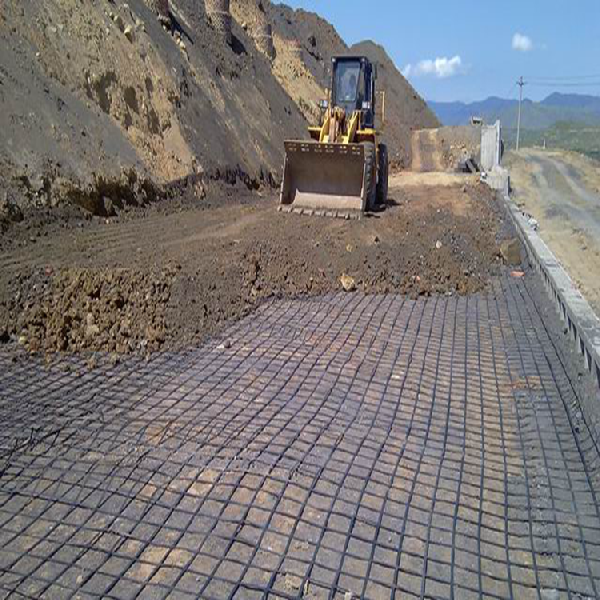Geogrid laying process:
Inspect and clean up the lower bearing layer→manually lay the geogrid→overlap, tie and fix→pave the upper subgrade soil→rolling→inspection.
Things to note when laying geogrid:
(1) The geogrid is laid on a flat lower-bearing layer according to the planned width. The upper bottom layer of filler is free of debris that may damage the geogrid. When laying the geogrid, the direction of high strength should be perpendicular to the axis of the embankment. layout. The geogrid is laid horizontally. Tighten and stretch when laying to prevent wrinkles, distortions or potholes. Geogrids are spliced longitudinally using the overlapping method, and the overlapping width is not less than 20cm.
(2) After laying the geogrid, manually lay the upper layer of filler and end the rolling in time to prevent long-term exposure to the sun. Then use mechanical transportation, leveling and rolling. Mechanical paving and rolling are carried out from both ends to the center, and rolling is carried out from both ends to the center, and the compaction degree is maintained to meet standard requirements.
(3) Prevent all construction vehicles and construction machinery from walking or parking on the paved geogrid. Check the quality of the geogrid at any time during construction. If any damage such as breakage, puncture, or tear is found, repair it according to the extent. or replace.
Geogrid construction method:
(1) First, accurately lay out the roadbed slope line. In order to ensure the width of the roadbed, each side is widened by 0.5m. After leveling the exposed base soil, use a 25T vibratory roller to statically press it twice, and then use a 50T vibratory roller to press it four times. , uneven local artificial cooperation leveling.
(2) Lay 0.3M thick medium (coarse) sand, and after leveling with manual collaborative machinery, use a 25T vibratory roller to perform static pressure twice.
(3) Lay geogrid. When laying geogrids, the bottom surface should be flat and dense. Generally, they should be laid flat, straightened, and not stacked. They should not be twisted or twisted. Two adjacent geogrids need to overlap by 0.2m, and the geogrids should be overlapped transversely along the roadbed. The connecting parts are connected with No. 8 iron wire every 1 meter, and the laid grid is fixed to the ground with U-shaped nails every 1.5-2m.
(4) After the first layer of geogrid is laid, initially fill the second layer of 0.2m thick medium (coarse) sand. The method is: transport the sand to the construction site by car and unload it on the side of the roadbed, and then push it forward with a bulldozer. , first fill 0.1m within 2 meters at both ends of the roadbed, fold up the first layer of geogrid, and then fill it with 0.1m of medium (coarse) sand. It is forbidden to fill and push the two ends to the middle, and all kinds of machinery are prohibited. When working on a geogrid that has not been filled with medium (coarse) sand, this will ensure that the geogrid is flat, bulging, and wrinkle-free. After the second layer of medium (coarse) sand is flat, a horizontal measurement must be performed. To prevent uneven filling thickness, use a 25T vibratory roller to statically press it twice after it is leveled.
(5) The construction method of the second layer of geogrid is the same as the first layer. Finally, fill it with 0.3M medium (coarse) sand. The filling method is the same as the first layer. After static pressing twice with a 25T roller, like this The roadbed base reinforcement is completed.
(6) After the third layer of medium (coarse) sand is rolled, lay two geogrids at both ends of the slope longitudinally along the line, overlap by 0.16m, and connect them in the same way, and then start the earthwork construction. When laying geogrids for slope protection, it is necessary to measure the edge lines of each layer, and ensure that the geogrids are buried 0.10m in the slope after slope repair on each side.
(7) For every two layers of soil filled with slope geogrid, that is, when the thickness is 0.8m, a layer of geogrid needs to be laid on both ends, and so on, until it is laid under the surface soil of the road shoulder.
(8) After the roadbed is filled, the slope should be repaired in time, and dry rubble protection should be carried out at the foot of the slope. In addition to widening the roadbed by 0.3M on each side, 1.5% of the settlement should be reserved.
Post time: Sep-14-2023




